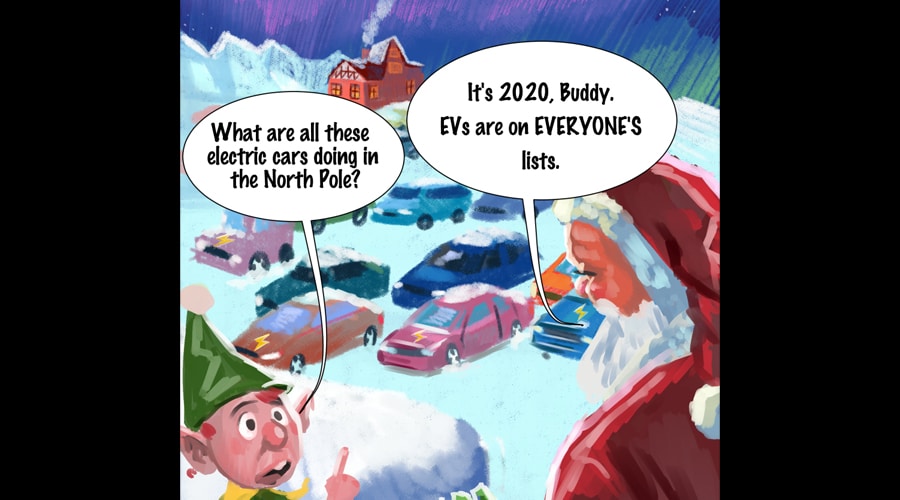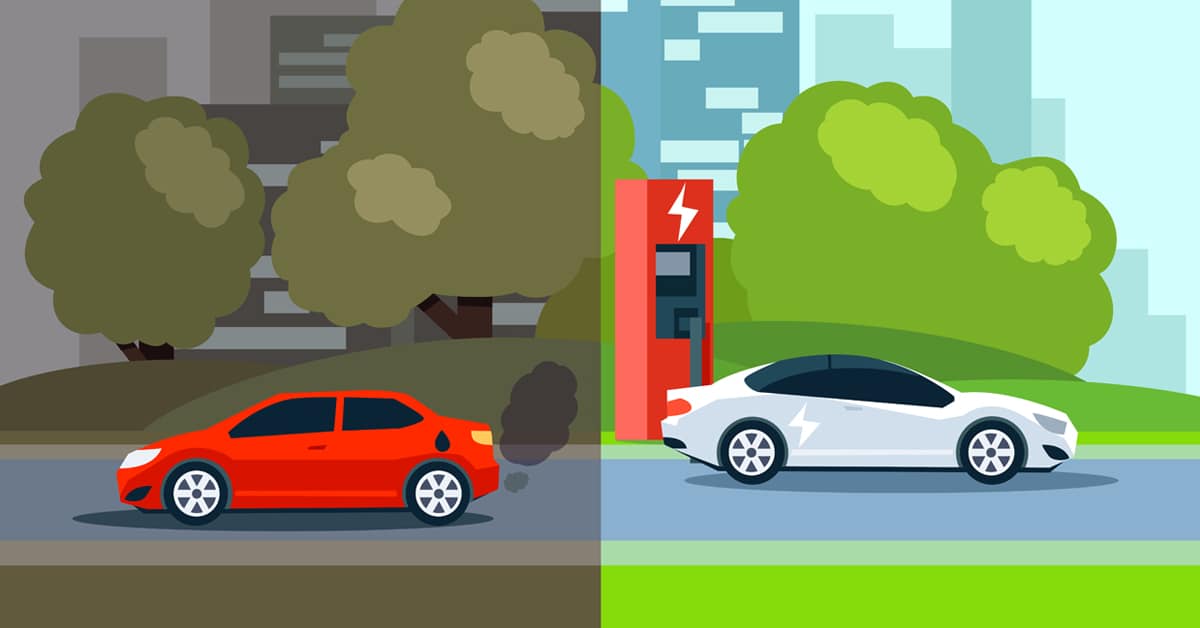Earlier this year, a record 41 percent of drivers in the U.S. said they would consider choosing a non-gas-powered car for their next vehicle—up 29 percent from the previous year—and interest in electric vehicles (EVs) has remained strong, even during the pandemic. But let’s face it, things need to move even faster. According to studies, the U.S. needs to electrify around 40-50 million light-duty vehicles by 2030 to meet the emission reduction goals set out in the Paris Agreement.
Despite the prospect of greater federal support for EVs in the coming years, state-level action is equally critical. States can play a key role in helping to tackle some of the biggest barriers to EV adoption, including the higher upfront costs, the availability of charging infrastructure, and the lack of inventory in some locations. By stepping up their pro-EV policies, states can help meet rising consumer demand for EVs while reaping a slew of other economic, health, and climate benefits.
State-level economic and health benefits of EVs
Fortunately, state support for EVs makes good economic sense. Replacing gas-guzzling vehicles with electric-powered ones means fewer dollars leaving state coffers to pay for out-of-state oil and gas, leading to greater energy security and independence while keeping money local. Studies in several states, including Ohio and Oregon, show that for every $1 million in direct savings from petroleum spending, the switch to EVs can also generate up to $570,000 in additional economic benefits, resulting in up to 25 new local jobs for every 1,000 EVs in the fleet. Transitioning to EVs can create and support jobs in areas such as manufacturing electrical components and batteries, building and installing EV charging stations, generating and supplying electricity, and producing and maintaining vehicles.
Going electric also brings health and climate benefits. In Virginia, transportation-related particulate matter, ozone, and nitrogen dioxide emissions led to an estimated 750 premature deaths in 2016, and in most states, low-income communities and communities of color suffer the highest air pollution-related costs. With zero tailpipe emissions, EVs can improve air quality and reduce health costs statewide through things like avoided asthma attacks, fewer lost workdays due to respiratory illnesses, and fewer premature deaths. From a climate perspective, EVs have lower emissions than gas-powered cars, even when the electricity used to charge them comes from today’s conventional power mix, and the climate benefits increase sharply with a switch to renewable power.
So, where can states get the biggest bang for their policy buck? Let’s consider a few of the top policies states can adopt today to accelerate EV uptake.
Top pro-EV policies that states can adopt today
- Provide state-level incentives: Although EV prices are expected to reach cost parity with gas-powered vehicles by 2027, their higher upfront cost continues to impede adoption. To boost EV uptake, states can provide financial incentives including tax credits, vehicle rebates, emissions testing exemptions, special access to no-fee vehicle lanes, and lower time-of-use charging rates.
- Offer an equitably designed point-of-sale EV rebate: Several states already fund rebates for both new and used electric vehicles to help reduce the upfront cost of buying an EV. However, states should also consider offering specific rebates at the time of purchase for low- to moderate-income communities, who may not have access to incentives such as federal or state tax credits. Studies show that even a $1,000 increase in a state’s EV subsidies can lead to a 7.5 percent increase in EV registrations in that state. Another analysis found that the EV incentive programs in just six states (California, Connecticut, Massachusetts, New Jersey, New York and Oregon) account for more than 40 percent of EVs sold nationwide. In a recent Generation180 survey of consumers in Virginia, more than 60 percent reported that access to purchase discounts, such as rebates provided at the point of sale, would make them more likely to buy an EV for their next vehicle.
- Adopt advanced clean car standards: Under federal law, California is authorized to enact their own emissions standards, which includes zero-emission vehicle (ZEV) standards. The ZEV standards require automakers to supply a certain percentage of ZEVs to the state to help reduce emissions. Fortunately, other states can also adopt these ZEV standards: 15 states have adopted (or are in the process of adopting) them. A 2019 study found that overall, ZEV states tend to have a higher EV inventory and number of vehicles available. As a result, residents of states without ZEV policies end up traveling to neighboring ZEV states to buy EVs due to a lack of availability back home. Adopting ZEV standards can help states keep EV purchases local, accelerating statewide adoption and bringing a host of clean air benefits.
- Support statewide charging infrastructure and EV readiness: To boost consumer confidence about the range and convenience of EVs, more robust charging infrastructure is needed. While it’s not hard for individual homeowners to make the required upgrades, businesses, workplaces, and apartment owners face bigger hurdles to installing chargers, such as higher upfront costs, HOA or landlord barriers, and insufficient parking spaces. To expand equitable access to charging, states can incorporate EV readiness into state building codes and help offset the costs of building and maintaining charging infrastructure. Virginia, for example, is using funds from the Volkswagen settlement to prioritize the installation of fast chargers along heavily traveled roads and in high-demand areas, with the aim of having 95 percent of residents within 30 miles of an EV charger.
- Issue bans and restrictions on the sale of new gas-powered vehicles. Recently, California took bold action by declaring it will phase out all sales of new gasoline-powered light-duty vehicles by 2035, encouraging drivers to switch to electric. According to the Coalition for Clean Air, electrifying transportation will create jobs and help California move forward in its economic recovery from the COVID-19 pandemic. Both New York and New Jersey are considering similar policies. States can also incentivize EV access by raising road use or parking fees for drivers of gas-powered vehicles (and/or lowering them for EVs).
- Collaborate with other states to fund carbon reduction programs. So far, 12 Northeastern and Mid-Atlantic states and the District of Columbia have joined the Transportation and Climate Initiative (TCI), affirming their commitment to decreasing transportation-related emissions. In 2018, nine of the members announced their intent to design a regional “cap, tax, and trade” system to reduce transportation emissions as much as 25 percent by 2032. The revenue generated from selling the tradeable emission credits in the TCI (and similar efforts elsewhere in the country) could go toward programs that expand public transit, electrify buses, and fund EV incentives.
These are just a few of the many approaches that states can take to boost EV adoption and reduce transportation-related emissions (other measures include supporting the electrification of school and transit buses, prioritizing and funding public transit, partnering with automakers and tech companies to boost micromobility options like e-scooters and e-bikes, and setting ambitious overall targets for electrifying transportation). It’s clear that Americans already support a transition to clean energy and electric mobility—how quickly we get there is a matter of consumer adoption and political will.
What you can do
- Check out Generation180’s Virginia Drives Electric report, which outlines the benefits of EVs, barriers to adoption, the policies we need, and how you can help.
- Engage with your state’s policymakers and encourage support for pro-EV legislation.
- Commit to making your next car electric by signing the ‘Going Electric’ pledge (or, of course, go buy one if you’re in the market for a car).
- Become an EV Ambassador: Join Generation180 and our network of EV advocates to support transportation electrification.

















